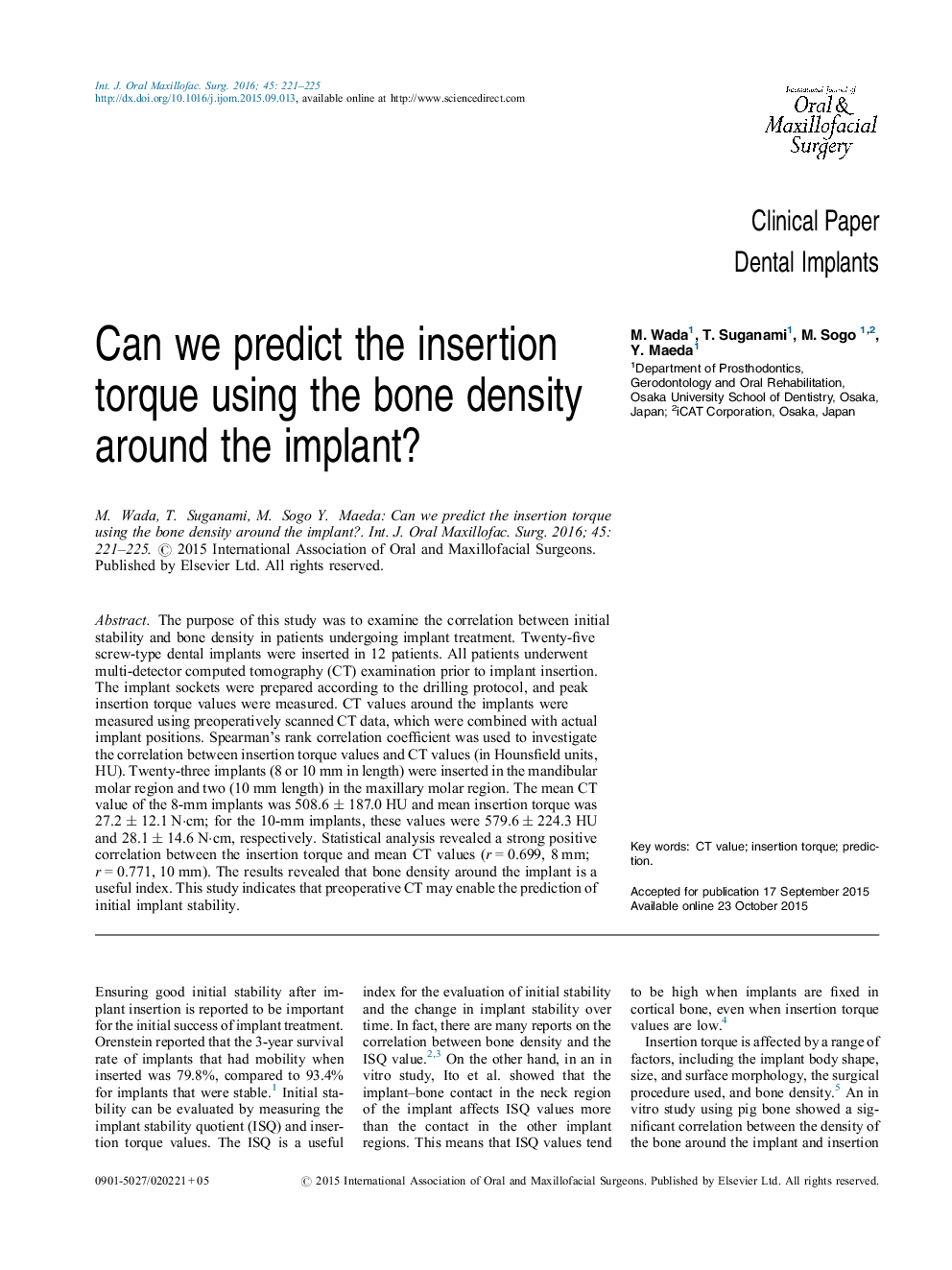| Article ID | Journal | Published Year | Pages | File Type |
|---|---|---|---|---|
| 3131893 | International Journal of Oral and Maxillofacial Surgery | 2016 | 5 Pages |
The purpose of this study was to examine the correlation between initial stability and bone density in patients undergoing implant treatment. Twenty-five screw-type dental implants were inserted in 12 patients. All patients underwent multi-detector computed tomography (CT) examination prior to implant insertion. The implant sockets were prepared according to the drilling protocol, and peak insertion torque values were measured. CT values around the implants were measured using preoperatively scanned CT data, which were combined with actual implant positions. Spearman's rank correlation coefficient was used to investigate the correlation between insertion torque values and CT values (in Hounsfield units, HU). Twenty-three implants (8 or 10 mm in length) were inserted in the mandibular molar region and two (10 mm length) in the maxillary molar region. The mean CT value of the 8-mm implants was 508.6 ± 187.0 HU and mean insertion torque was 27.2 ± 12.1 N·cm; for the 10-mm implants, these values were 579.6 ± 224.3 HU and 28.1 ± 14.6 N·cm, respectively. Statistical analysis revealed a strong positive correlation between the insertion torque and mean CT values (r = 0.699, 8 mm; r = 0.771, 10 mm). The results revealed that bone density around the implant is a useful index. This study indicates that preoperative CT may enable the prediction of initial implant stability.
